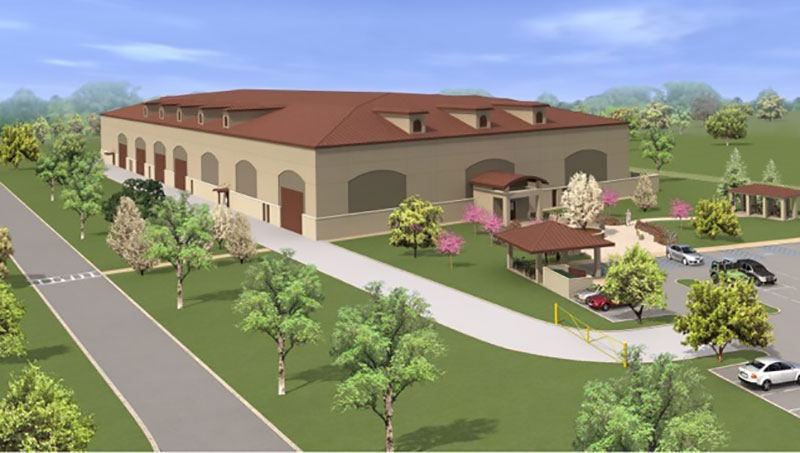Joint Fires & Effects Training Simulation Facility

Contract Amount: $22,177,265
LEED Certification: Silver
Contract Duration: December 2009 – June 2011
Gross SF: 80,000
This contract provided for the design and construction of a facility to house JFETS simulator trainers, virtual reality environmental trainers, digital distributed learning classrooms, video teleconferencing, administration space, secure storage, break room and restrooms necessary to support the training mission requirement at Fort Sill. At 80,000 square feet the building layout was designed to meet the functional and adjacency requirements required by the program. Emphasis was placed on design features which optimize functional/operational requirements such as interior/exterior finishes and systems as well as life cycle/energy efficiency.

The building was designed with the functional spaces required to provide a stand-alone fully functional facility. All interior spaces were designed to be column-free for maximum usability. He purpose of this facility was to provide independent “lab” spaces where simulators would be installed for virtual training. Given the programmatic needs the building design incorporated many special acoustic features including all Lab partitions having a minimum STC rating of 63 which extended to the roof deck above. All other spaces had a minimum STC rating of 45. Sound attenuation at walls separating adjacent training labs and training lab walls at corridors was also provided. Additionally exterior walls were designed to meet STC 50.
To save annual energy costs and off-set carbon-based emissions a solar water heating system which provided 76% of the building’s domestic hot water requirements was provided. This system was made up of solar panels placed on the roof which supplied a storage tank to meet peak demand.
To further enhance the facilities sustainable systems a Hybrid-Geothermal Heat Pump System (H-GHP) was provided. Additionally the fresh air for occupant comfort was provided by a Dedicated Outside Air Unit (DOAH). As the fresh air enters the DOAH free energy is recovered in the form of warmer or cooler air. The energy exchange is provided by an Energy Recovery Ventilator (ERV) in the mechanical room. The airstream of fresh outside air and the building exhaust pass through an “energy wheel” (within the ERV) where energy is captured and transferred to the incoming fresh air. The ERV unit is 80% effective in transferring energy between airstreams; pre-warming the outside air under cold conditions, or pre-cooling under warm conditions.

